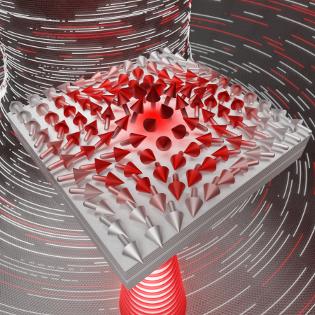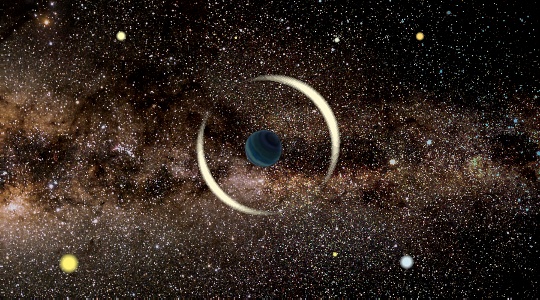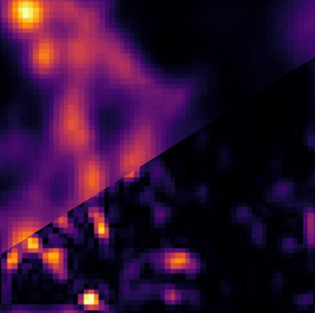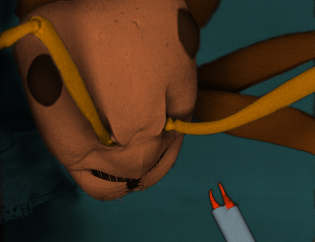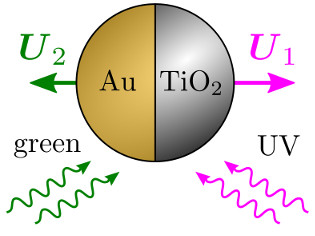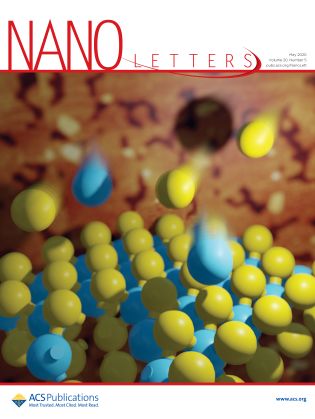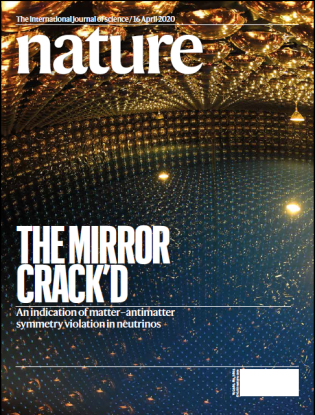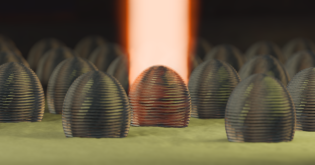Press releases
Second order optical merons, or light pretending to be a ferromagnet
2021-02-22
The scientists have demonstrated how to structure light such that its polarization behaves like a collective of spins in a ferromagnet forming half-skyrmion (also known as merons). To achieve this the light was trapped in a thin liquid crystal layer between two nearly perfect mirrors. Skyrmions in general are found, e.g., as elementary excitations of magnetization in a two-dimensional ferromagnet but do not naturally appear in electromagnetic (light) fields. | More
An Earth-sized rogue planet discovered in the Milky Way
2020-10-29
Over four thousand extrasolar planets have been discovered to date. Although many of the known exoplanets do not resemble those in our solar system, they have one thing in common – they all orbit a star. However, theories of planet formation and evolution predict the existence of free-floating (rogue) planets, gravitationally unattached to any star. Indeed, a few years ago Polish astronomers from the OGLE team from the Astronomical Observatory of the University of Warsaw provided the first evidence for the existence of such planets in the Milky Way. Writing in Astrophysical Journal Letters, OGLE astronomers announced the discovery of the smallest rogue planet found to date. | More
Microscopy beyond the resolution limit
2020-10-07
The Polish-Israeli team from the Faculty of Physics of the University of Warsaw and the Weizmann Institute of Science has made another significant achievement in fluorescent microscopy. In the pages of the Optica journal the team presented a new method of microscopy which, in theory, has no resolution limit. In practice, the team managed to demonstrate a fourfold improvement over the diffraction limit. | More
Dr. Przemysław Mróz awarded the Frank Wilczek Award of the Jagiellonian University and the Kościuszko Foundation
2020-07-17
Dr. Przemysław Mróz has been announced the first laureate of the new Frank Wilczek Award. The prize was established to recognize outstanding young researchers who have made a significant contribution to physics, astronomy or closely related areas. The award patron – Professor Frank Wilczek, physicist from the Massachusets Insitute of Technology – is the laureate of the 2004 Nobel Prize in Physics . The Award is funded by the Jagiellonian University and the Kościuszko Foundation. Dr. Przemysław Mróz has been awarded for the scientific achievement entitled: Free-floating planets – a new category of exoplanets. | More
The smallest micro-gripper, grown on optical fibers, is operated remotely with light
2020-07-15
Researchers at the Faculty of Physics, University of Warsaw, used the liquid crystal elastomer technology to demonstrate a series of micro-tools grown on optical fibers. The 200-micrometer gripers are controlled remotely, without electric wiring or pneumatic tubing, with green light delivered through the fibers – absorbed light energy is directly converted into the gripper jaws' action. | More
Dr. Przemysław Mróz awarded the International Astronomical Union 2019 PhD prize
2020-06-10
Dr. Przemysław Mróz has been awarded the International Astronomical Union PhD prize for outstanding scientific achievements of astronomy PhD students around the world for his dissertation Astrophysical applications of gravitational microlensing in the Milky Way. The thesis was written under the supervision of Professor Andrzej Udalski from the Astronomical Observatory of the University of Warsaw. | More
Active particles with light-switchable propulsion direction and reversible interactions
2020-06-03
Researchers from the Faculty of Physics at the University of Warsaw, ETH in Zurich and the University of Cambridge have synthesized and analysed active microparticles self-propelling in a fluid and reversing their propulsion direction depending on the wavelength of illuminating light. A research article summarising their work has recently been published in Nature Communications. | More
Breakthrough in research on the production of atomically thin crystals with excellent optical properties
2020-05-20
For the first time, monolayers of transition metal dichalcogenides with excellent optical properties were grown. A team of researchers from the Faculty of Physics of the University of Warsaw managed to overcome the technical difficulties faced by industry and scientists from around the world, namely the very limited size, heterogeneity, and broadening of the spectral lines of fabricated transition metal dichalcogenides. Monolayers without these defects were grown by molecular beam epitaxy. The key element of developed technology is the use of atomically flat boron nitride substrates. | More
T2K Results Restrict Possible Values of Neutrino CP Phase
2020-04-15
The T2K Collaboration has published new results showing the strongest constraint yet on the parameter that governs the breaking of the symmetry between matter and antimatter in neutrino oscillations. Using beams of muon neutrinos and muon antineutrinos, T2K has studied how these particles and antiparticles transition into electron neutrinos and electron antineutrinos, respectively. The parameter governing the matter/antimatter symmetry breaking in neutrino oscillation, called δcp phase, can take a value from -180º to 180º. For the first time, T2K has disfavored almost half of the possible values at the 99.7% (3σ) confidence level, and is starting to reveal a basic property of neutrinos that has not been measured until now. This is an important step on the way to knowing whether or not neutrinos and antineutrinos behave differently. These results, using data collected through 2018, have been published in the multidisciplinary scientific journal, Nature on April 16. | More
Ultra-long-working-distance spectroscopy with 3D-printed aspherical microlenses
2020-04-02
Researchers at the Faculty of Physics, University of Warsaw have demonstrated micrometre-sized 3D-printed aspherical microlenses which can replace bulky microscope objectives in spectroscopic measurements of single point-like light emitters (e.g. quantum dots or atomically thin 2D materials). The proposed microlenses increase the available working distance, i.e. the distance between the lens front and the sample surface, by over two orders of magnitude, and open up new perspectives for a wide class of optical experiments. | More






